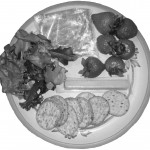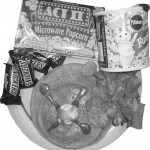A single cheese streusel muffin served in the school cafeteria can have up to 510 calories, 225 of those calories from fat. With 17 percent of kids all over America suffering from obesity, KSD and Chartwells are introducing a new program called Balanced Choices. With this program already in effect in both the elementary and the middle schools , the focus is moving to KHS.
“The high school is where the majority of the food is prepared, so the sooner the better,” Michael Havener, assistant superintendent of finance and operations, said.
According to Havener, the schools have been attempting to remove fryers from the kitchens and replace them with ovens as part of the Balanced Choices program. The elementary schools never owned fryers, and both North and Nipher made the switch three years ago.
“It is hard for us to take a piece of equipment that is still working and replace it,” Terri Whitaker, director of food services, said.
The school district is in favor of the project, but finding the money in the budget and making the necessary installations may take a year at most. Estimates have shown the cost to buy and install a single oven at around $30,000, while the school would hope to be able to acquire two or three, depending on the funds available.

At this point though, the only fried foods offered are a la carte. To meet district health requirements, the portion size of those items must be similar to that of the reimbursable meals, or what is known as the back line. Changes have already been put into effect, such as healthier, homemade pizza and the removal of salt as a condiment.
“I’ve seen the weird, square, pizza, but it doesn’t look any healthier,” Ashley Holahan, senior, said. “I usually eat out for lunch, but it looks like [the cafeteria] definitely has better drinks now.”
The pizza is now made with a whole wheat crust, which reduced the calories and sugar the previous slices contained. Instead of cutting some student favorites such as pizza or chicken strips, KSD and Chartwells’ goal is to adapt previous recipes to be more nutritious.
“We try to work to keep everything in moderation, so when the students leave for college they don’t go crazy because they can have everything they couldn’t get at home,” Whitaker said.
All of the meals will need to have less than 30 percent of calories from fat, according to the district health requirements. Snacks such as chips or cookies will have less than 200 calories and less than 35 percent of calories from fat. Some of the snacks offered in the cafeteria will be removed after their stock runs out, such as Pop-Tarts.
The Balanced Choices program will not exist solely to eliminate foods from the menu but will also provide options such as a different kind of vegetable each day, fresh fruit and whole wheat for a healthier twist on the classic lunch items.
“The healthiness of a lunch depends on what you add: if you had a healthy salad and covered it in a fatty dressing, it could end up being just the same as a hamburger,” Whitaker said.
The reduced-fat sugar cookies and freshly baked bread at the sandwich bar allow students to keep eating the same meals, but with a higher health value. In an effort to keep teenagers strong, active and healthy, items that currently appear on the menu will be replaced within the next year, starting with the muffins.









